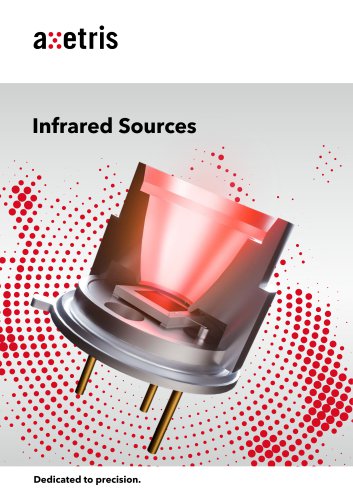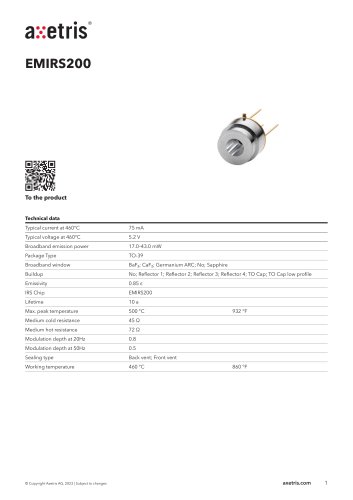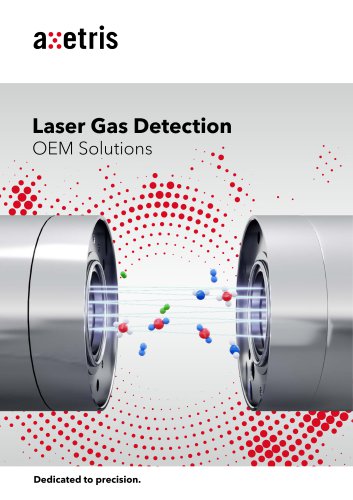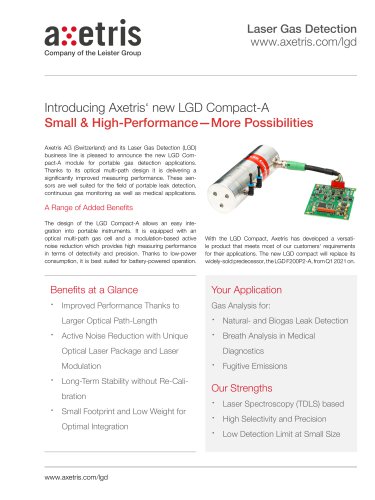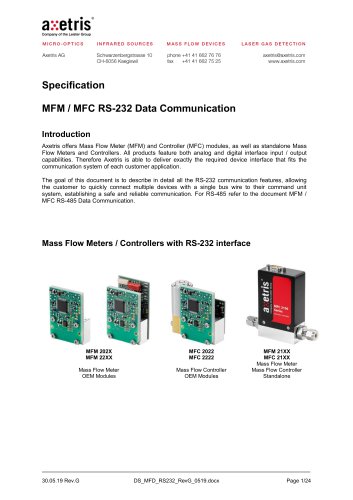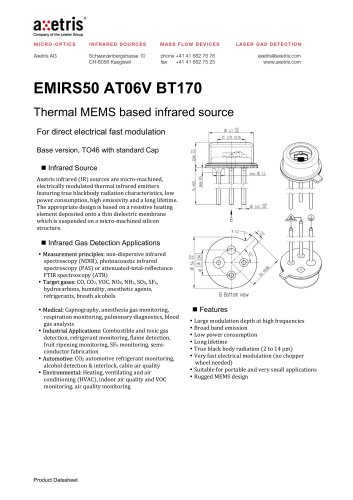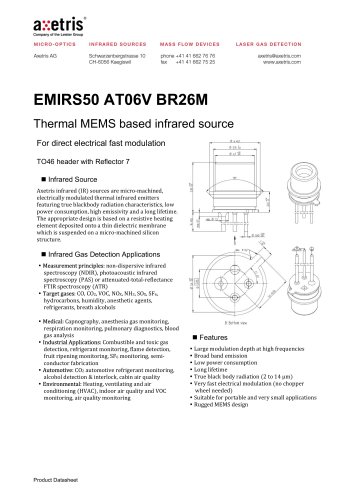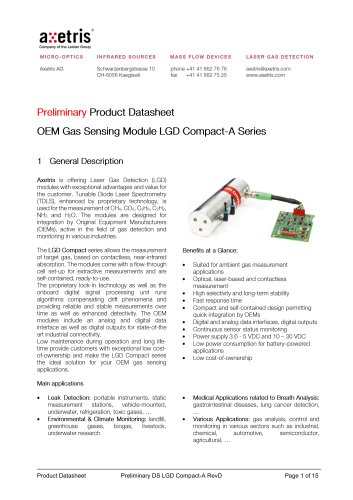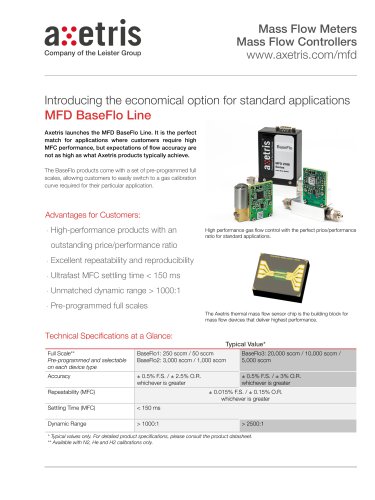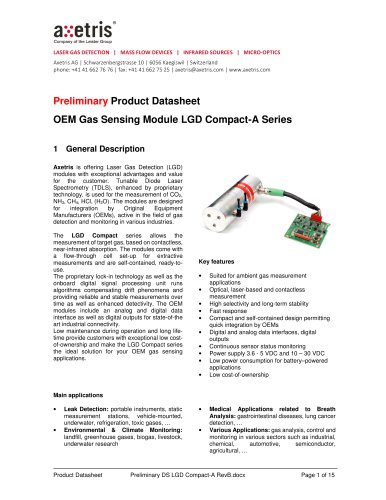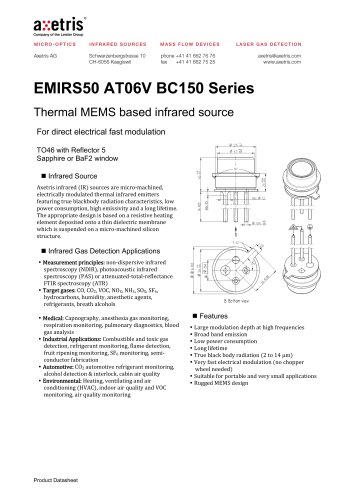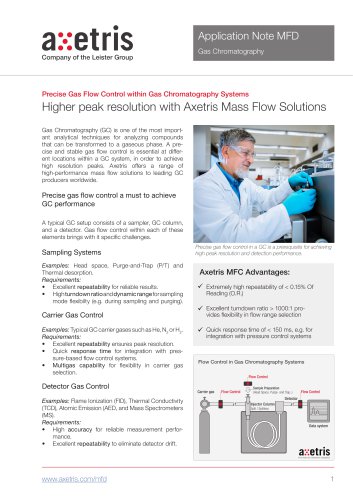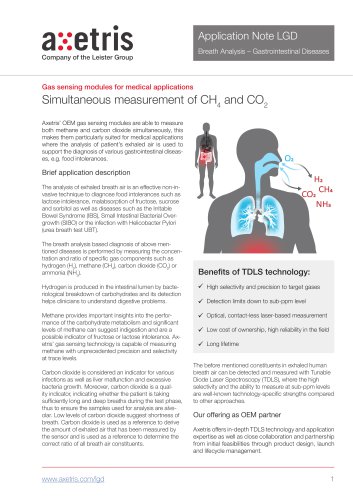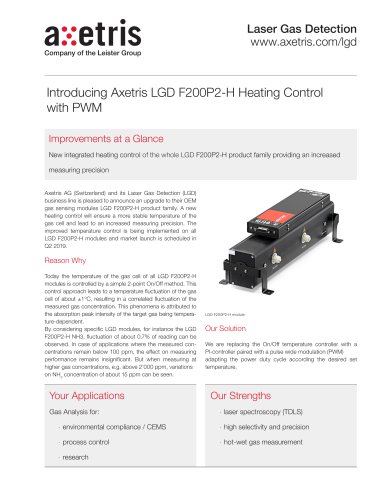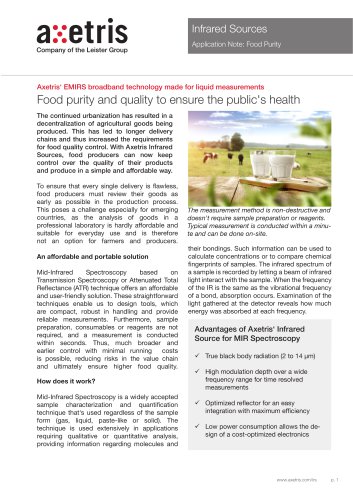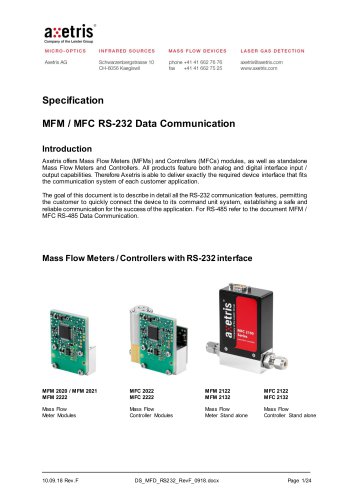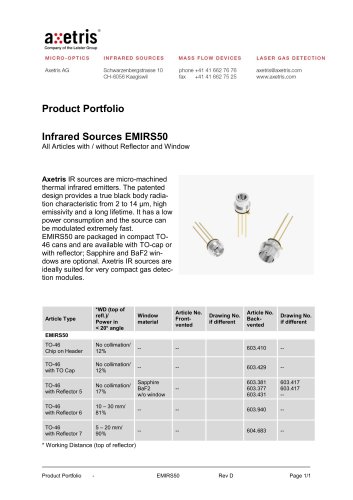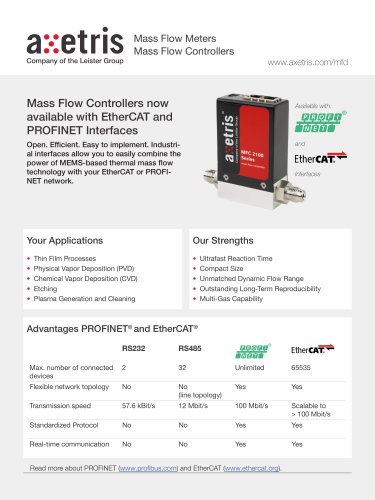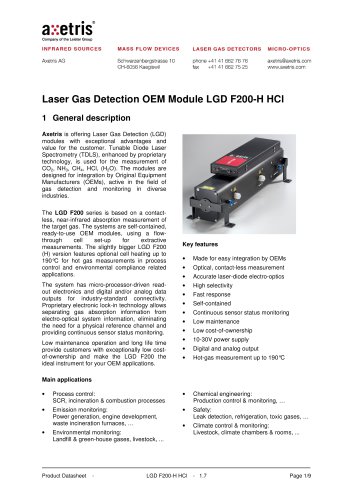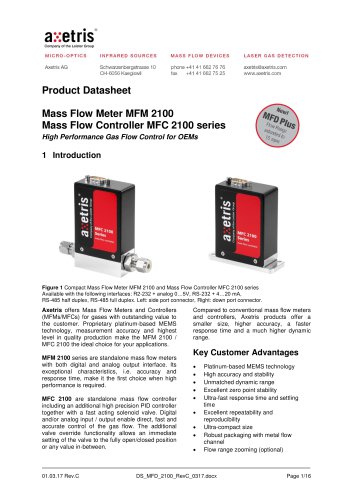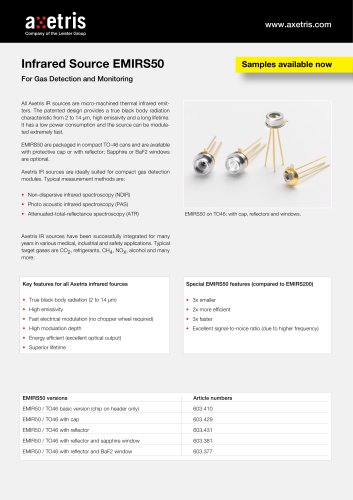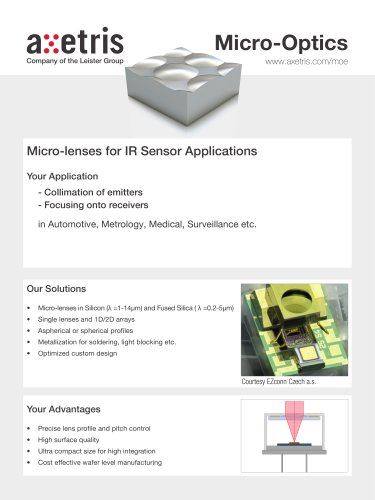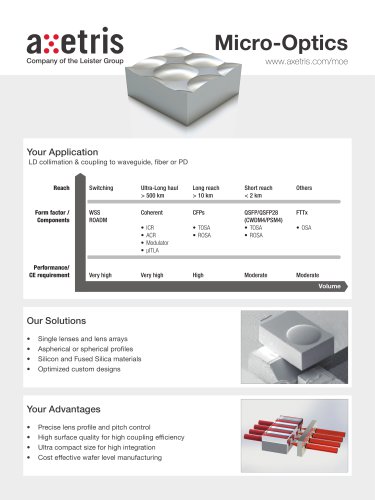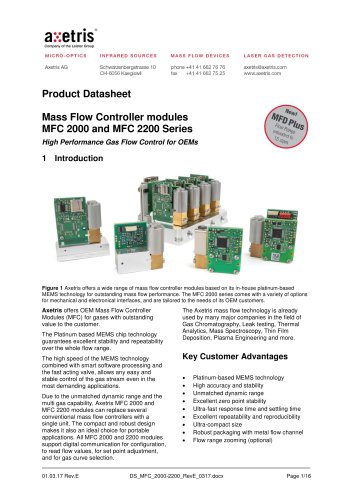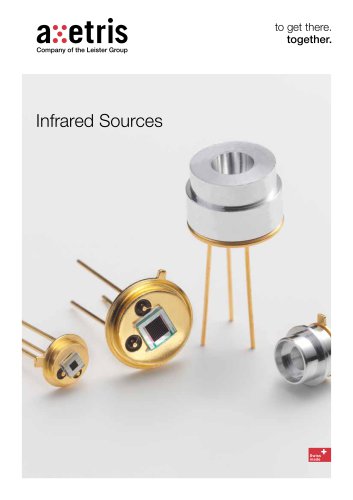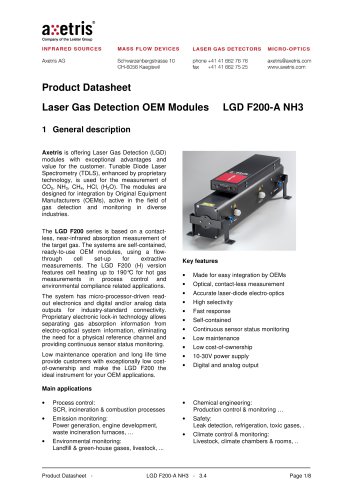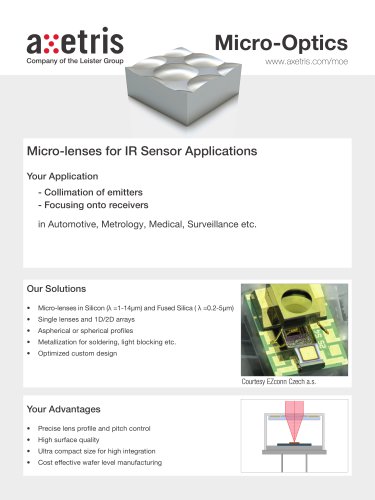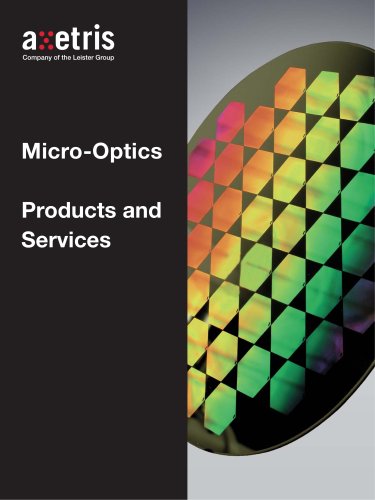
Catalog excerpts
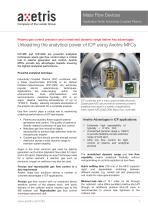
Company of the Leister Group Application Note: Inductively Coupled Plasma Plasma gas control precision and unmatched dynamic range deliver key advantages ICP-MS and ICP-OES are powerful analytical techniques where gas flow control plays a critical role in plasma generation and control. Axetris MFCs provide key advantages towards ensuring the highest analytical performance. Powerful analytical technique Inductively Coupled Plasma (ICP) combined with a Mass Spectrometer (ICP-MS) or an Optical Emission Spectroscope (ICP-OES) are extremely popular atomic spectroscopy techniques. Applications are wide-ranging within the environmental, food, pharmaceutical and semiconductor industries. Typically, ICP is an argon plasma reaching temperatures of up to 10'000 K, thereby allowing complete atomization of the analyte into elements for a complete analysis. Gas flow control plays a critical role in maximizing analytical performance of ICP techniques: • Plasma and auxiliary flows support plasma generation and control. The quality of plasma is directly related to precision of gas flow control. • Nebulizer gas flow should be highly reproducible to achieve high detection limits for the particular analyte. • Coolant gas flow should provide enough control resolution across a wide dynamic range to maintain system stability. Argon is the most common gas used for plasma generation and control (standard flow rates 0-2 slpm and 0-20 slpm). Depending on exact technique used for a certain element, a reaction gas such as ammonia, oxygen or methane may also be used. Precise and reproducible gas flow control is a key requirement Axetris mass flow solutions deliver a number of concrete advantages in ICP applications. Precise gas flow control with no overshoot allows sensitive control of the plasma torch, and quick delivery of the collision and/or reaction gas to the MS collision cell. Reproducible gas flow control minimizes instrument drift. ICP combined with a mass spectrometer (pictured: Quadrupole MS) can provide an extremely powerful analytical technique in a variety of applications. Inset: Axetris MFC2022 OEM Mass Flow Controller. Axetris Advantages in ICP applications: 9 Extremely high repeatability of typically < 0.15% O.R. 9 Unmatched dynamic range (> 1000:1) to provide flexibility across wide flow range of 0-20 slpm 9 Ultra low flow control for tight control of plasma and analytical process The unmatched dynamic range and low flow capability means analytical flexibility without compromising on control resolution at low flows. Quick settling time (150 ms) of the MFC supports rapid and dependable switching between different modes, e.g. vented cell and pressurized cell mode for mass spectrometers. Minimal leak rate of 10-5 mbar l/s He through the solenoid valve offers excellent positive shut-off (though an additional positive shut-off valve is recommended to ensure leak tightness to the collision cell).
Open the catalog to page 1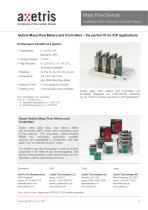
Mass Flow Devices Application Note: Inductively Coupled Plasma Axetris Mass Flow Meters and Controllers – the perfect fit for ICP applications Performance benefits at a glance: Repeatability 6.4 x 34 x 48.5 mm, e.g. OEM Mass Flow Meter < 4 ms (mass flow sensor) < 150 ms (mass flow controller) O.R.: Of Reading; F.S.: Full Scale For F.S. > 15'000 sccm: • Specified repeatability is +/- 0.2% O.R. • Specified accuracy is +/- 2.5% O.R. Axetris Mass Flow Meters and Controllers can be flexibly integrated into multi-channel manifolds, e.g. for control of various gas flows in ICP applications....
Open the catalog to page 2All Axetris AG catalogs and technical brochures
-
Infrared Sources
12 Pages
-
Infrared Sources EMIRS200
1 Pages
-
EMIRS200
2 Pages
-
EMIRS50 AT06V BT170
8 Pages
-
EMIRS50 AT06V BR26M
8 Pages
-
EMIRS50 AT06V
8 Pages
-
EMIRS50 AT06V BR25M
8 Pages
-
EMIRS50 AT06V BC150
8 Pages
-
MFD BaseFlo Line
2 Pages
-
EMIRS50 AT06V BC150 Series
8 Pages
-
Gas Chromatography
2 Pages
-
MFM / MFC RS-232
24 Pages
-
Infrared Sources EMIRS50
1 Pages
-
LGDF200 A CH4
8 Pages
-
LGDF200 H HCl
9 Pages
-
FL - Infrared Source EMIRS50
2 Pages
-
Micro-Optics
2 Pages
-
Infrared Sources EMIRS200
12 Pages
-
DS - LGDF200 H NH3
9 Pages
-
DS- LGDF200 A NH3
8 Pages
-
DS - LGDF200 A CO2
8 Pages
-
FL - Axetris MFD Plus
2 Pages
-
FL - LGD F200P2
2 Pages
-
Reflector
4 Pages
-
MEMS Services
2 Pages


